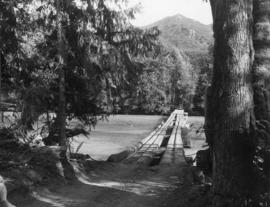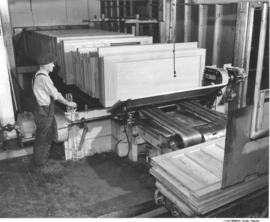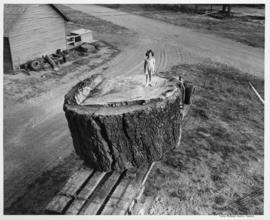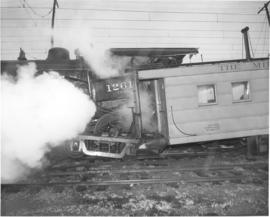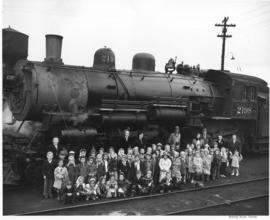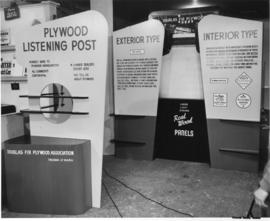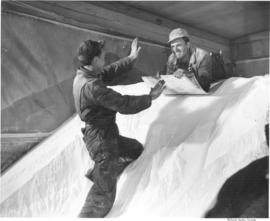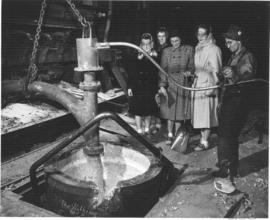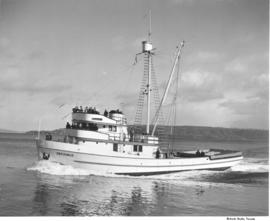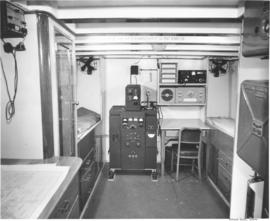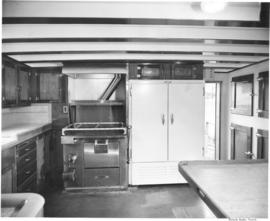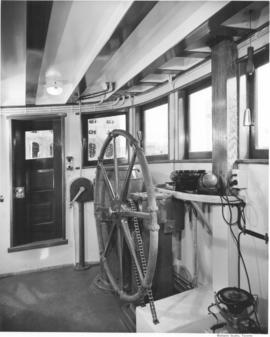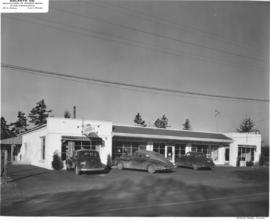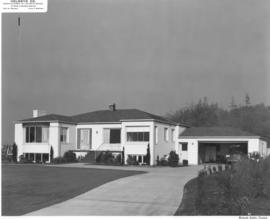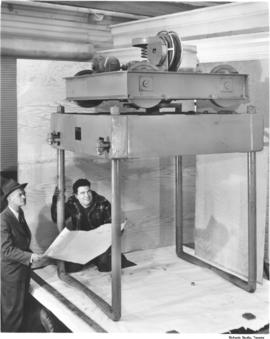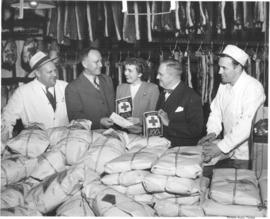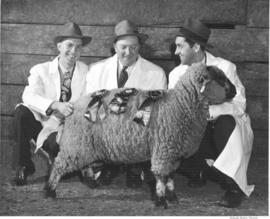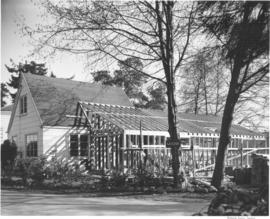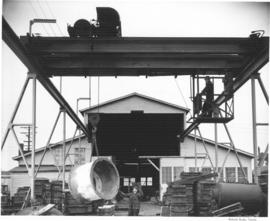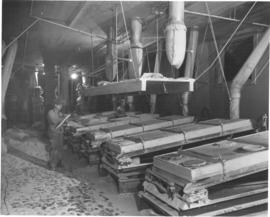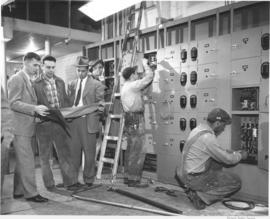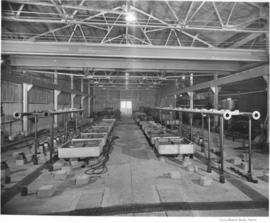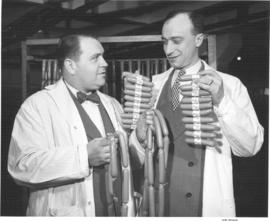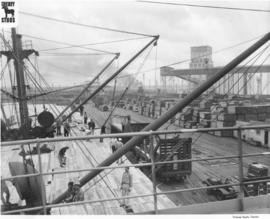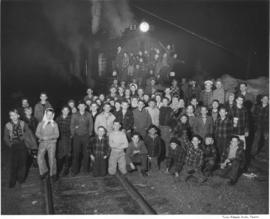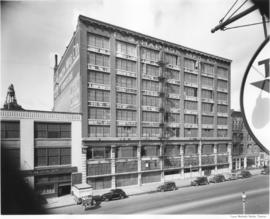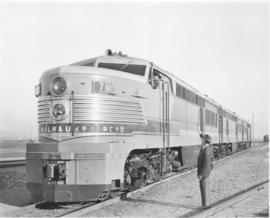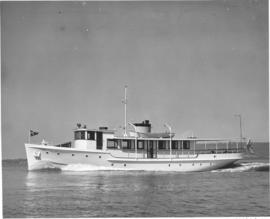Chamber of Commerce delegation of about ten men going to Montana, Chicago, Milwaukee, St. Paul and Pacific Railroad, Mr. Burns. Tacoma business men are standing by the engine of the Olympia Hiawatha ready for a tour to Montana the week of February 15, 1948. A well-diversified cross section of business and industrial interests were represented. They were to visit Butte, Helena, Great Falls, Billings and Missoula. Montanans were looking west for more of their needs and this trade promotion tour was designed to strengthen business ties between the two areas. L-R, Cecil Walrath, N.O. Galteland, Leo Gallagher, John Hamilton (on cab ladder), Fred H. Marvin, A.W. Hardy, Samuel Lister and Fred Sandstrom. The engineer, Sam Winn, is shown looking out from the engineer's cab. (T.Times, 2/9/1948, p.17; 2/16/1948, p.16) TPL-1711
Railroads--Tacoma--1940-1950; Chicago, Milwaukee, St. Paul & Pacific Railroad Co. (Tacoma); Business people--Tacoma--1940-1950; Travel--Tacoma--1940-1950;
